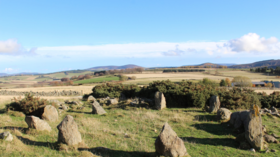Ancestors of Stonehenge builders revealed in new research
Western British hunter-gatherers were not the forebearers of those that built arguably Britain’s most iconic prehistoric monument, Stonehenge, according to new research
Researchers from the University College London say the ancestors of Stonehenge’s creators, which is as British as fish and chips, were in fact immigrants who traveled across the Mediterranean to Britain around 6,000 years ago.
They compared DNA from Neolithic human remains found in Britain, with people alive at the same time in Europe.
Details published in the Nature Ecology & Evolution journal say that Neolithic inhabitants ostensibly traveled from Anatolia (modern Turkey) to Iberia (modern Spain and Portugal), before heading north and landing in Britain in 4,000BC.
Located in Wiltshire, England, Stonehenge is thought to be a prehistoric temple aligned with the movement of the Sun. It has become a popular destination for pagan-style celebrations and is often graced with revelers dressed in druid robes and flower garlands for key occasions.
6,000BC was a time of mass migration out of Anatolia, which saw farming introduced to Europe, with Britain reaping the benefits. One group of early farmers traveled along the river Danube into Central Europe, while another moved west across the Mediterranean.
DNA analyzed by researchers indicates that Neolithic Britons were mainly descended from those that took the Mediterranean route. DNA of early British farmers was found to most closely resemble Neolithic people from Iberia.
Think your friends would be interested? Share this story!
Subscribe to RT newsletter to get stories the mainstream media won’t tell you.







Comments are closed.